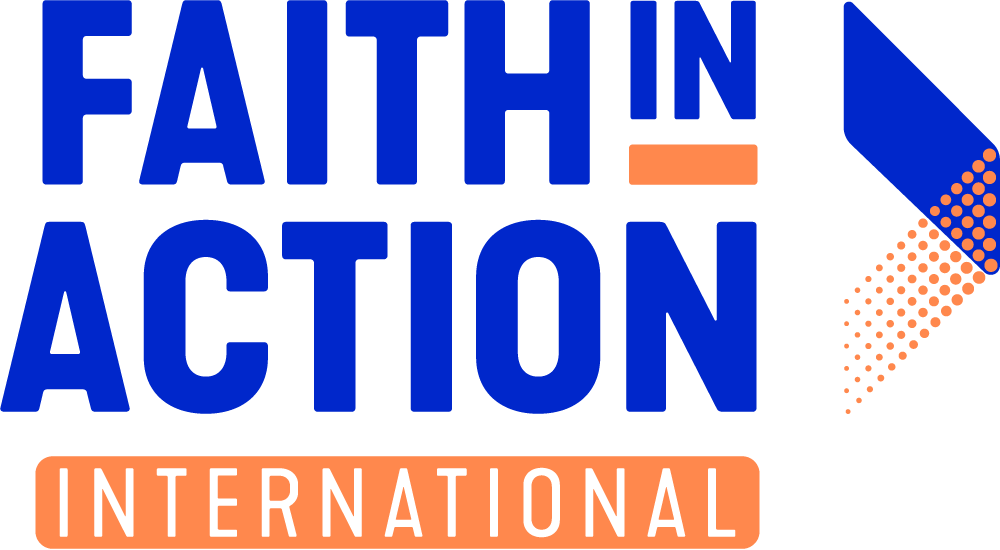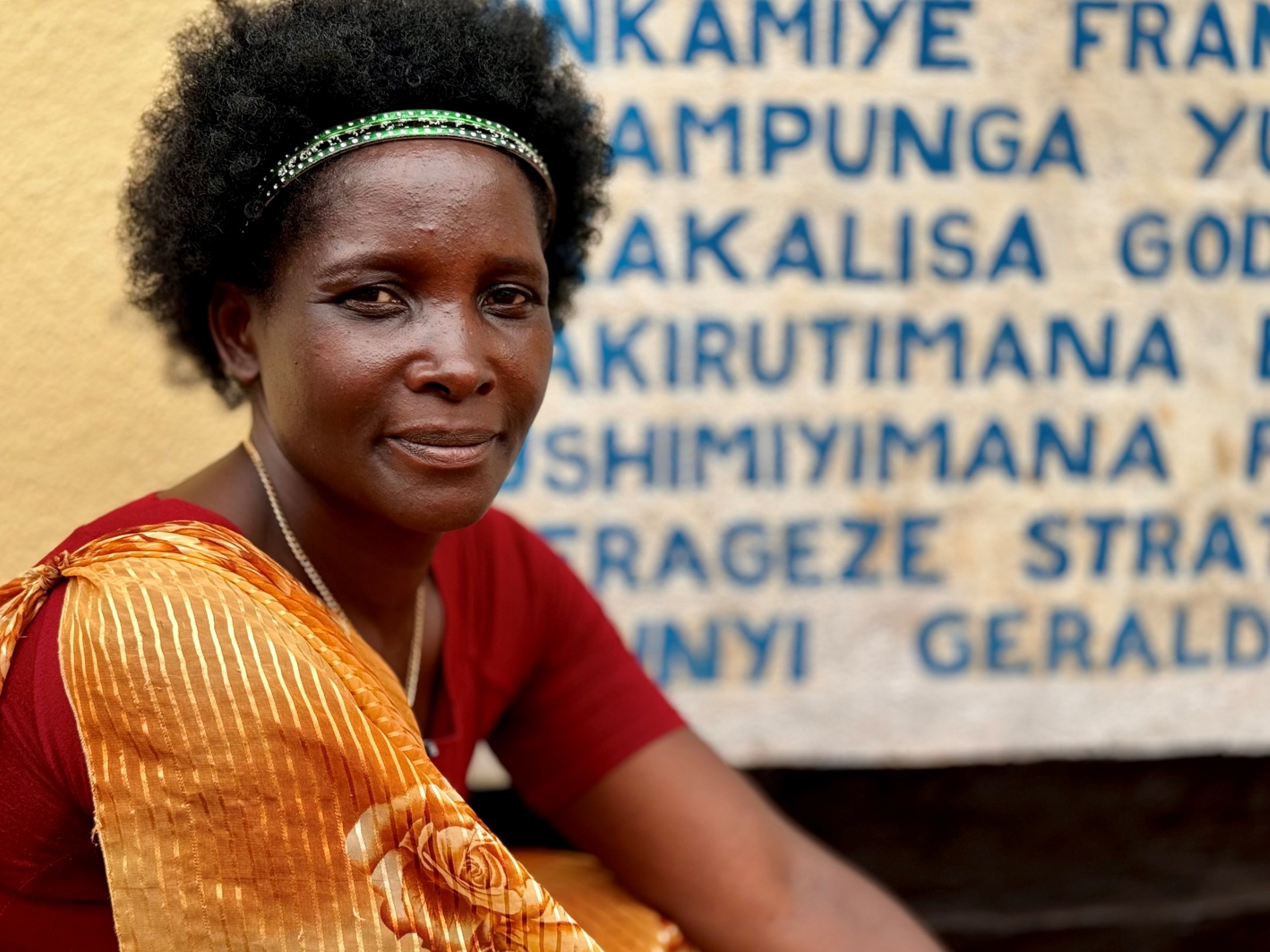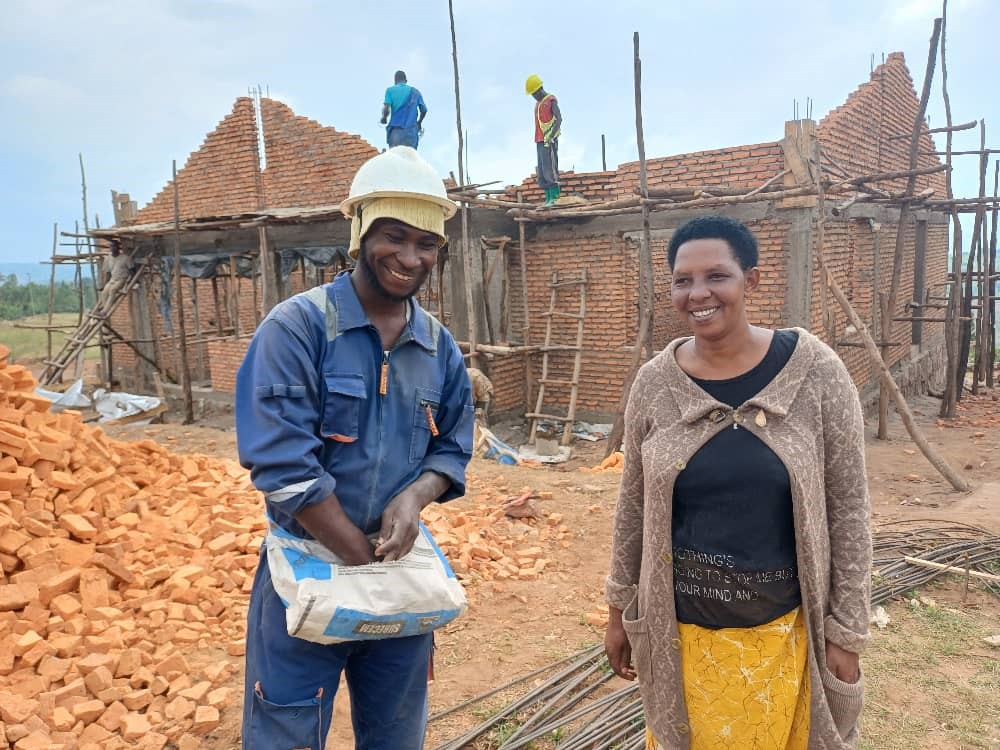“I didn’t want to see another mother needlessly die in childbirth” - Specioza Our organizing in Rwanda began in 2009 in the rural village of Mumeya, where mothers…
Kirehe: Building and Healing Together as a Community
Published Oct. 31, 2009 in New Times: Rwanda’s First Daily
Tucked far away in a small hidden part of Kirehe District near the Burundi and Tanzania borders is a community of serious minded, hardworking people, who are more knowledgeable about the aims and importance of Vision 2020 Umurenge to Rwandans than their proud compatriots in urban Kigali. These are the people of Mumeya, a village found in Rwantonde, Gatore Sector.
This is the story of how the Mumeya community decided to interpret Vision 2020 and their part in its fulfillment.
The village is located about 65 kilometres from the town of Kibungo and just about five kilometres from the Akagera River, that serves as the boundary between Burundi on the one hand and Tanzania on the other.
This close proximity to those borders therefore means that most of the area inhabitants are returnee refugees who are struggling to cope with the serious business of survival, and so their existence is mostly characterised by a frustrated sense of hopelessness.
The nearest hospital, Kirehe, is 30 kilometres away. There was no school in a radius of 10 kilometres by 2006. The place itself is inaccessible, with only a rugged track serving for the road that they use to take in some supplies. They have to trudge five kilometres to the Akagera River to get a jerrycan of water for home use.
What this actually translates into is a life of extreme hardship for the people living it; deaths, be they maternal or children, are a common occurrence, when most of them would have been preventable.
It is such kind of frustration that leads to fantastic ideas hatching and impacting greatly on the wellbeing of the nation as a whole. It is into this kind of helplessness that Pastor John Rutsindintwarane stepped.
Rutsindintwarane is a holder of a Masters in Arts degree in Conflict Analysis and Resolution from the University of Eastern Mennonite, Virginia, USA, and another Masters degree in Community Development from Wartburg Lutheran Seminary, Debuque, Iowa, USA.
For this man who is the Secretary General of the Lutheran Church in Rwanda, and also the voice of the Lutheran World Federation (LWF), the devastating effects of the 1994 Rwandan Genocide and the overwhelming hardships faced by the survivors fueled his search for ways and means of helping to rebuild his beloved country.
Like Edwin Sabuhoro, winner of the 2008 International Union for Conservation of Nature (IUCN) Young Conservationist Award for turning mountain gorilla poachers into protectors by developing incentives for local people to protect gorillas’ habitat by founding the Iby’Iwacu Cultural Village, a successful community-based tourism initiative found in Musanze District in Northern Rwanda, Rutsindintwarane believes that sustainable improvements in quality of life are dependent upon Rwandans working side-by-side, building spiritual and relational capacity while working on critical community needs.
He also believes in building from the ground upwards, and this needs individual Rwandans as well as the general Rwandan society to build a new discipline of thinking.
So he started what was later to be called Congregations Rebuilding Communities in Rwanda (CRCR), whose mission was to equip grassroot leaders to rebuild community and democratic institutions and address issues of justice, health, education and poverty.
“Through my leadership, CRCR has identified key clergy in the Kirehe and Rukira Districts, and thus combining faith with action, we are building a strong foundation to what the community will be able to do and achieve, and minimise the conditions that led to the societal antagonisms, all of which created the environment that resulted in the annihilation of about 1 million Rwandans in 1994,” he stressed.
Using the People Improving Communities through Organising (PICO) organising model, which goes hand in hand with Vision 2020 Umurenge, this project is meant to equip grassroot people and identify potential leaders with the power and creativity to address issues that they collectively identify, to be able to improve the quality of life for their families and communities.
CRCR, like the country’s leaders, believes that the Rwandan people are the most precious natural resource in the society, and it is only a question of bringing out their worth.
Armed with his research books and theoretical knowledge, Rutsindintwarane stormed Kibungo, an area he knew well due to previous work experience there as a Lutheran World Federation official involved in transition periods of emergency, repatriation, resettlement of old and new case refugees to Bukora and Ndego settlement sites.
On June 26, 2006, work started in earnest. He convened a village meeting and conducted a survey that was based on strategic questions like how long each person had stayed in the area, and if there was some change that they wanted to happen, what it would be?
Ultimately, every person was involved in deciding what type of development they wanted, and four critical issues emerged from these surveys: there was an urgent need to get water closer to the residents; access to Rwantonde would become easier with a better road; they needed a school; and lastly, they needed a health centre badly.
The research covered 2000 respondents, and it was conducted by the Local Organizing Committee members who had been trained – leadership training seen here.
Most respondents zeroed in on a health centre as the priority. As earlier mentioned, the nearest hospital is Kirehe, 30 kilometres away. The next is Kibungo, 65 kilometres away; and depending on their ailments, some residents trek to Murgwanza-Ngara Hospital in Tanzania, or Muruzo, Muyinga Hospital in Burundi for medical treatment – a whole day’s journey in either case.
TAKING ACTION
After identifying their need, Pastor John as he is fondly called, took his residents (eight potential men and women leaders) to Gituku to conduct a research meeting, and every leader was equipped with strategic questions to ask Sister Martha, a medical officer who had gone through the experience of building a health centre there.
This meeting established a budget and a path to strategic implementation of building the hospital that they had decided on.
Six acres of land were donated to the hospital by the sector leaders.
They came back from Gituku with determination, and started breaking stones for the foundation, which were ferried by John with his Land Cruiser and trailer – an arduous task, seeing that 600 tonnes were hauled to the site.
For funding, John started writing to friends and his alma maters back in the US for assistance. Through these Universities and the Lutheran Church in America, he secured his first funding to the tune of US$15,000, then later some more US$5000 came in.
In October 2007 construction of the yet to be named hospital started in earnest.
The community leaders visited the Kirehe ex-Mayor Patrick Nkunzumwami and held a research meeting with him in which he promised them Frw7 million towards their cause.
Ezra Nkubana, a sector leader, says they have not yet got it, but it is enough that they are working closely with the Mayor’s office to lift their people out of the health problem they are facing.
It is also the Mayor who gave them the go-ahead to talk to the former Minister of Health-turned-MP, Dr Ntawukuliryayo Damascene.
This community of intrepid Vision 2020 implementers, some of whom claimed had never been to Kigali before, trekked there and met the big man, who did not only just promise, but actually gave them Frw6 million that they have put to good use, and completed the foundation of their hospital.
The Community has already gone back to him to thank him and to account for the money donated.
CALL FOR HELP
The Mumeya people are building a 50-bed health center, with a laboratory, a training wing for basic health care, in addition to facilities for mobile health clinics.
Their research shows that about 30,150 people stand to benefit from the services that this hospital will provide, and that given more commitment by the government, friends and other donor agencies like NGOs and embassies, they project to complete construction in 2009.
And help continues to pour in, because the project has generated a lot of interest. Dr Catherine Fitzgerald from the University of Reno, Nevada has promised help by engineering students there, who offered to help with the water problem not only for the hospital, but possibly for Rusumo high school.
They call for the local leaders to augment their little efforts to lift themselves out of health problems by visiting them and giving encouragement.
MODEL PROJECT
The Mumeya project has brought out issues that are pertinent to share with all Rwandans. It has trained leaders in the community to identify and own issues and to help mobilise others to solve other problems facing them.
The method of problem-solving has also become systematic – every challenge is approached with scientific precision, as in formulating research questions, tallying responses and making budgets.
Training leadership is part of the Vision 2020, where we expect a big difference in trained personnel not only through the classroom, but also in the communities, to overcome the leadership deficits.
Learning about the project, the Matimba community in Nyagatare requested to be trained so that they too, take charge of their destiny. After the training they resolved to start a kindergarten school for their children.
The people of Juba in Southern Sudan have also invited the Mumeya community to Sudan to share with them their successful stories they have gone through during their transition period, and they will be going early next year.
For Speciosa Usabyeneza, a community leader, the project has given more than just the hospital they are constructing.
“You know, it is much more important to meet now and discuss issues relevant to our community. Just coming together and talking, the companionship, is so dear to me,” she said. “Before this it was every man for himself, like city folk.
Now we are closer together; we are a community in the real sense of the word, sharing our joys and challenges together. We are able to learn and turn theory into action; something that everyone can understand even though we did not have chance to go to secondary school.”
It is not everyday that we go to school and come back home to apply our knowledge to build a community.
However, this is exactly what John Rutsindintwarane and Edwin Sabuhoro have done. They went to study, came back with paper certificates, but have used their knowledge to such a great advantage that they are living examples of what education should be all about.
Pastor John is grateful to his mentor, Ron Snyder for the guidance and contribution towards turning his book knowledge into a tangible thing for the Mumeya community and for all Rwandans.
The hospital needs a total of $100,000 to complete, and those brave people and their erstwhile leader call upon every well wisher to come to their aid and add their shoulders to the task for its completion.


